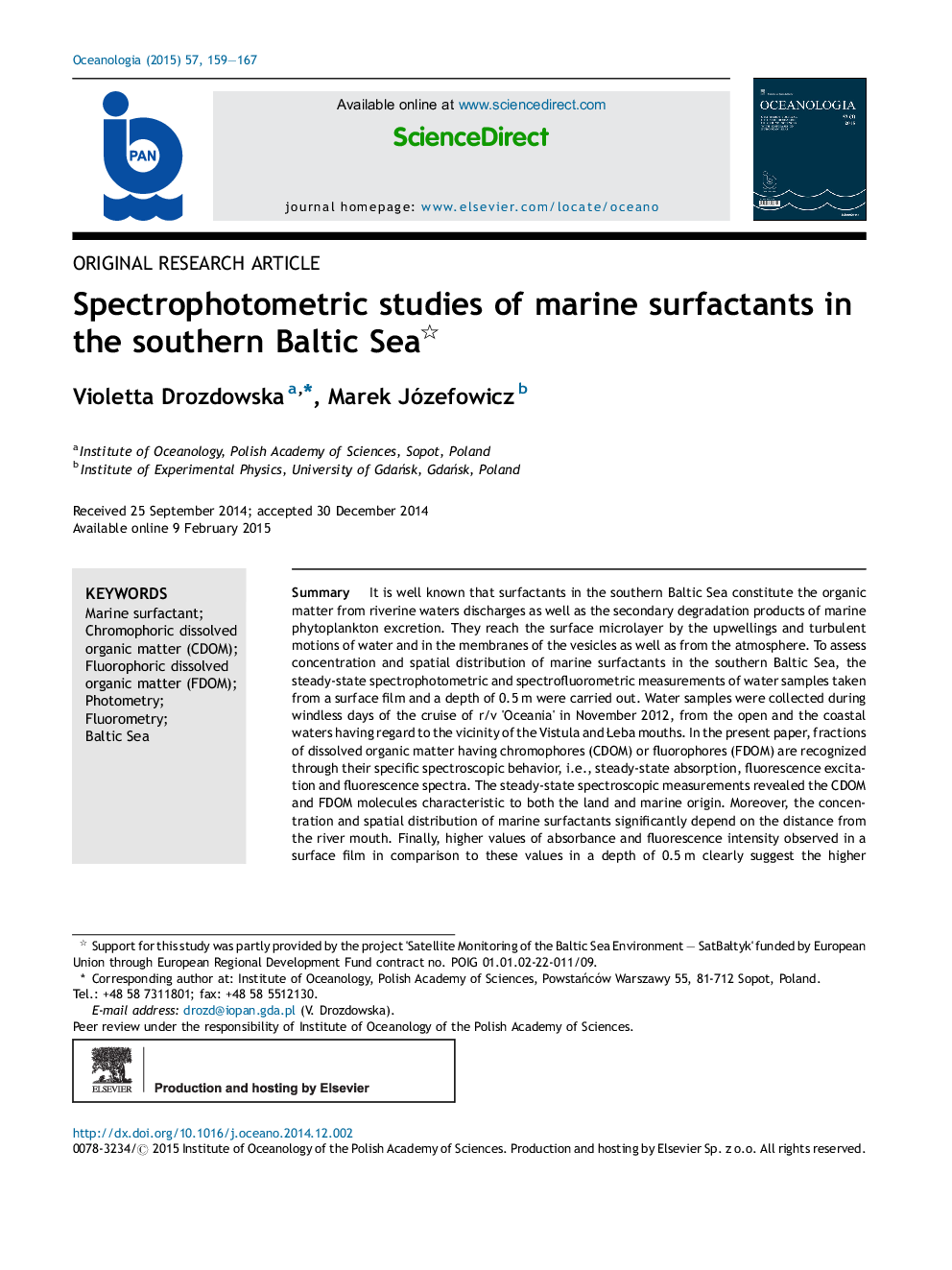| Article ID | Journal | Published Year | Pages | File Type |
|---|---|---|---|---|
| 2069772 | Oceanologia | 2015 | 9 Pages |
SummaryIt is well known that surfactants in the southern Baltic Sea constitute the organic matter from riverine waters discharges as well as the secondary degradation products of marine phytoplankton excretion. They reach the surface microlayer by the upwellings and turbulent motions of water and in the membranes of the vesicles as well as from the atmosphere. To assess concentration and spatial distribution of marine surfactants in the southern Baltic Sea, the steady-state spectrophotometric and spectrofluorometric measurements of water samples taken from a surface film and a depth of 0.5 m were carried out. Water samples were collected during windless days of the cruise of r/v ‘Oceania’ in November 2012, from the open and the coastal waters having regard to the vicinity of the Vistula and Łeba mouths. In the present paper, fractions of dissolved organic matter having chromophores (CDOM) or fluorophores (FDOM) are recognized through their specific spectroscopic behavior, i.e., steady-state absorption, fluorescence excitation and fluorescence spectra. The steady-state spectroscopic measurements revealed the CDOM and FDOM molecules characteristic to both the land and marine origin. Moreover, the concentration and spatial distribution of marine surfactants significantly depend on the distance from the river mouth. Finally, higher values of absorbance and fluorescence intensity observed in a surface film in comparison to these values in a depth of 0.5 m clearly suggest the higher concentration of organic matter in a marine film. On the other hand, our results revealed that a surface microlayer is composed of the same CDOM and FDOM as bulk water.
